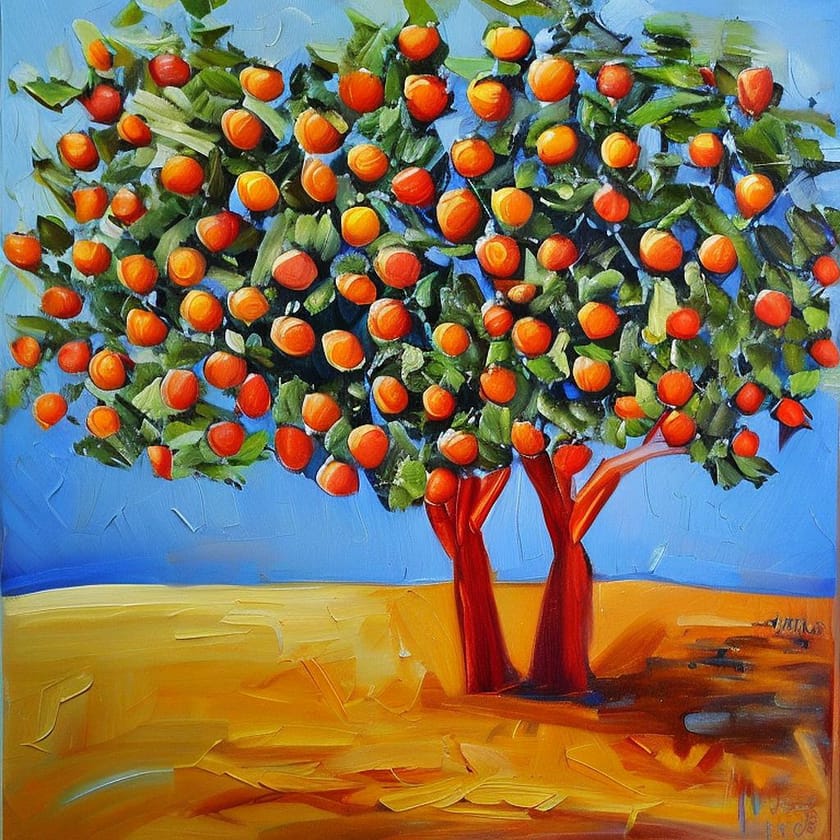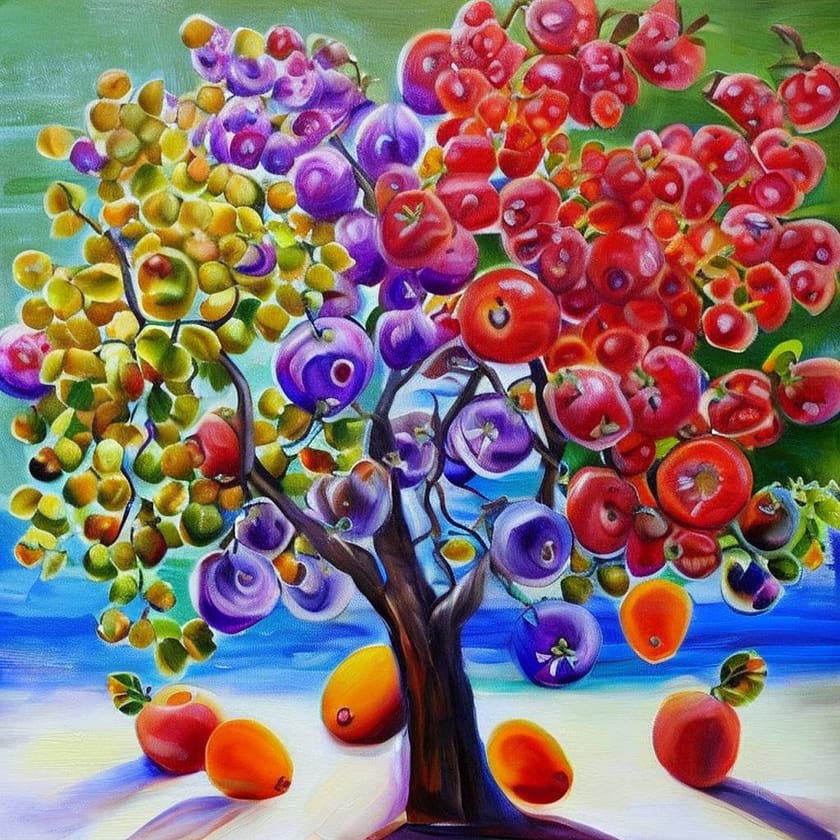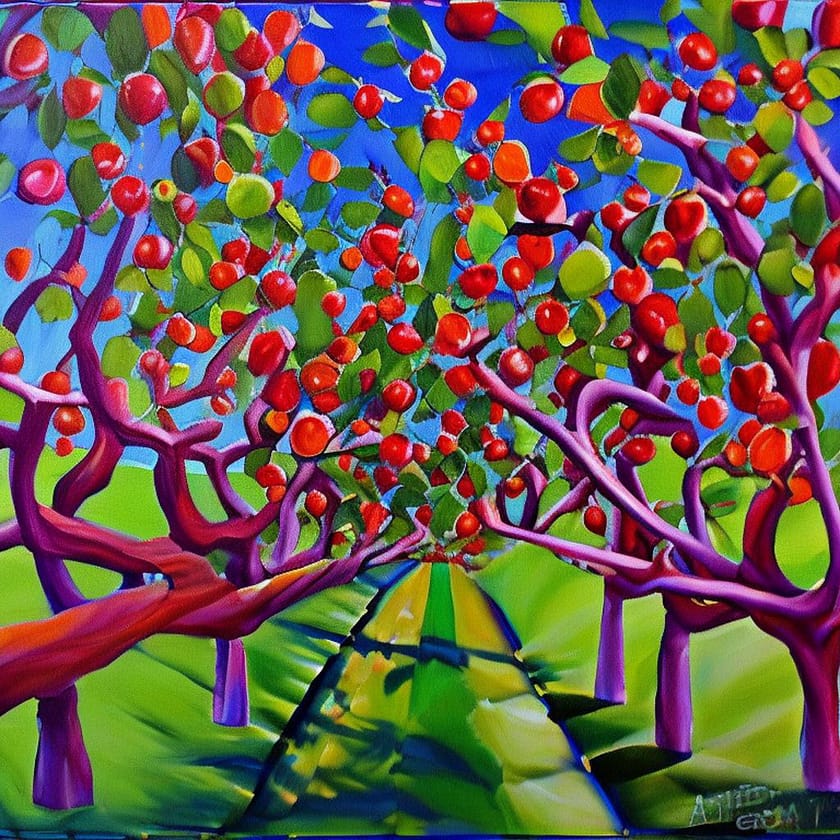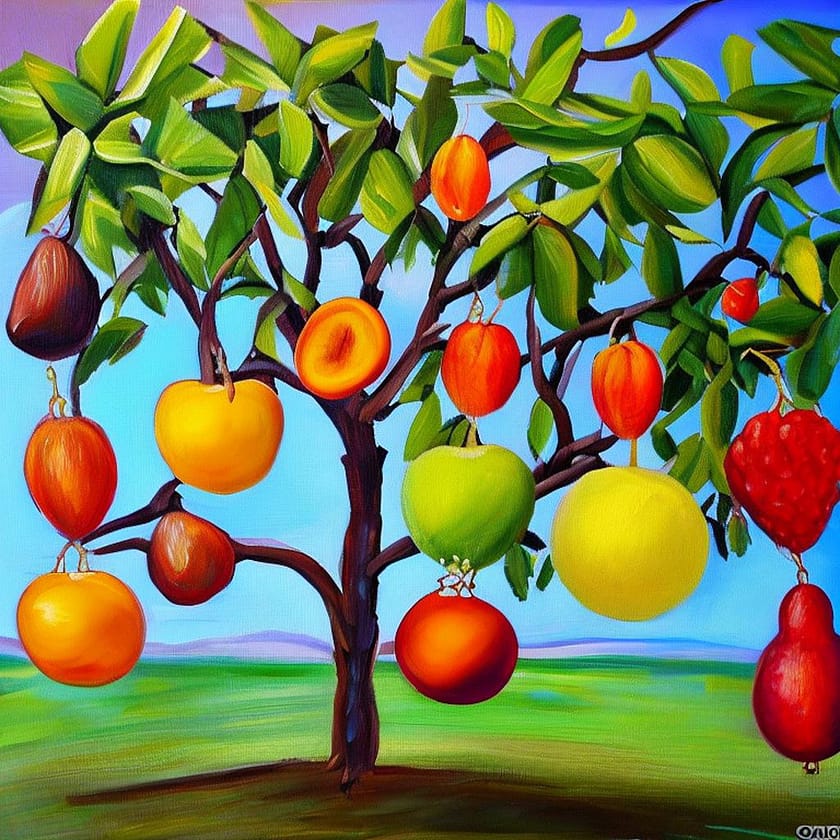Most characteristic fruit trees in Europe
Europe is home to a variety of fruit trees, each with its own distinct characteristics. Here are some of the most characteristic fruit trees in Europe:
- Apple – The apple tree is one of the most widely cultivated fruit trees in Europe and is a symbol of health and fertility.
- Pear – The pear tree is another popular fruit tree in Europe and produces sweet and juicy fruit.
- Cherry – Cherries are a popular summer fruit in Europe and the cherry tree is widely cultivated for its sweet, juicy fruit.
- Plum – The plum tree is native to Europe and produces a variety of sweet and juicy fruit that are popular for eating fresh or for making jams and other preserves.
- Apricot – The apricot tree is native to Asia but is widely cultivated in Europe for its sweet, juicy fruit that is high in vitamins and minerals.
- Peach – The peach tree is native to China but is widely cultivated in Europe for its sweet, juicy fruit that is high in fiber and vitamins.
- Walnut – The walnut tree is native to Europe and is grown for its delicious nuts that are high in healthy fats, protein, and fiber.
These are just a few of the most characteristic fruit trees in Europe, and there are many other types of fruit trees that are grown in the region as well

Most characteristic fruit trees in Africa
Africa is a diverse continent with a range of climates and vegetation, but there are several fruit trees that are commonly found in many parts of Africa, including:
- Mango: The mango tree is native to India but has been widely cultivated throughout Africa and is now one of the most popular fruits on the continent.
- Banana: Bananas are a staple food in many African countries, and the fruit and the plantain variety are widely grown for their nutritious and tasty fruit.
- Orange: Oranges are a common fruit tree in Africa, and the fruit is an important source of vitamin C for many people.
- Lime: Lime trees are widely grown in Africa for their juicy, tart fruit, which is used to add flavor to many different dishes.
- Avocado: Avocado trees are found in many parts of Africa and produce a rich, creamy fruit that is used in many different dishes.
- Papaya: Papayas are grown in many parts of Africa and are valued for their sweet, juicy fruit and the health benefits that they provide.
- Coconut: Coconut palms are widely cultivated in many African coastal regions, and the fruit is used for food, drink, and for its oil.
These are some of the most common fruit trees in Africa, but there are many other types of fruit trees that are grown in different regions, depending on the local climate and soil conditions.
Most characteristic fruit trees in the Middle East
The Middle East is a region with a rich history of agriculture and a diverse range of climates, and as a result, there are several fruit trees that are characteristic of the area. Some of the most common fruit trees in the Middle East include:
- Date palm: The date palm is one of the most iconic fruit trees in the Middle East and is widely cultivated for its sweet, juicy fruit. Dates are a staple food in many parts of the region and have been an important source of nutrition for thousands of years.
- Pomegranate: The pomegranate is a fruit that is native to the Middle East and is widely cultivated for its sweet, juicy fruit and its health benefits.
- Olive: Olive trees are widely grown in the Middle East and are an important source of oil for cooking and for use in cosmetics and soaps.
- Fig: Fig trees are a common sight in the Middle East and produce a sweet, juicy fruit that is used in many different dishes.
- Lemon: Lemon trees are widely grown in the Middle East, and the fruit is used to add flavor to many different dishes, as well as for its health benefits.
- Grape: Grapes are grown in many parts of the Middle East and are used to make wine, raisins, and fresh fruit.
These are some of the most common fruit trees in the Middle East, but there are many other types of fruit trees that are grown in different regions, depending on the local climate and soil conditions.

Most characteristic fruit trees In Asia
Asia is the largest and most populous continent in the world, and as a result, it is home to a vast diversity of climates and vegetation. Some of the most characteristic fruit trees in Asia include:
- Mango: Mangos are widely cultivated in many parts of Asia and are known for their sweet, juicy fruit. They are a staple food in many parts of the region.
- Durian: Durian is a unique and controversial fruit that is native to Southeast Asia. Its strong, pungent odor and spiky exterior are easily recognizable, and it is widely regarded as one of the most flavorful fruits in the world.
- Lychee: Lychee is a sweet, juicy fruit that is native to China and is widely cultivated in many parts of Asia. It is often used in desserts and other sweet dishes.
- Jackfruit: Jackfruit is a large, exotic fruit that is native to Southeast Asia and is widely grown in many parts of the region. It is a staple food in many parts of Asia, and its flavor has been described as a combination of pineapple, banana, and mango.
- Banana: Bananas are widely cultivated in many parts of Asia and are a staple food in many parts of the region.
- Papaya: Papaya is widely grown in many parts of Asia and is known for its sweet, juicy fruit and its health benefits.
- Pineapple: Pineapples are widely grown in many parts of Asia, and the fruit is used for food and drink, as well as for its sweet, juicy flesh.
These are some of the most characteristic fruit trees in Asia, but there are many other types of fruit trees that are grown in different regions, depending on the local climate and soil conditions.
Most characteristic fruit trees in Australia
Australia is a unique and diverse continent with a range of climates, and as a result, it is home to a wide variety of fruit trees. Some of the most characteristic fruit trees in Australia include:
- Mango: Mangos are widely cultivated in northern Australia and are known for their sweet, juicy fruit.
- Banana: Bananas are widely grown in tropical and subtropical regions of Australia, and the fruit is a staple food in many parts of the country.
- Avocado: Avocado trees are widely grown in subtropical regions of Australia and are known for their rich, creamy fruit.
- Lime: Lime trees are widely grown in Australia for their juicy, tart fruit, which is used to add flavor to many different dishes.
- Orange: Oranges are widely grown in Australia, and the fruit is an important source of vitamin C for many people.
- Passionfruit: Passionfruit is widely grown in Australia for its sweet, juicy fruit and its use in desserts and other sweet dishes.
- Macadamia: Macadamia nut trees are widely grown in subtropical regions of Australia and are known for their rich, buttery nuts.
These are some of the most characteristic fruit trees in Australia, but there are many other types of fruit trees that are grown in different regions, depending on the local climate and soil conditions
Most characteristic fruit trees in South America
South America is a diverse continent with a range of climates, and as a result, it is home to a wide variety of fruit trees. Some of the most characteristic fruit trees in South America include:
- Mango: Mangos are widely cultivated in many parts of South America and are known for their sweet, juicy fruit.
- Banana: Bananas are widely grown in many parts of South America and are an important staple food in many parts of the region.
- Pineapple: Pineapples are widely grown in many parts of South America, and the fruit is used for food and drink, as well as for its sweet, juicy flesh.
- Papaya: Papaya is widely grown in many parts of South America and is known for its sweet, juicy fruit and its health benefits.
- Guava: Guava is widely grown in many parts of South America and is known for its sweet, juicy fruit and its use in desserts and other sweet dishes.
- Açai: Açai is a small, purple berry that is native to the Amazon region of South America and is widely regarded as a superfood due to its high levels of antioxidants and other health benefits.
- Cacao: Cacao trees are native to the Amazon region of South America and are the source of cocoa, which is used to make chocolate and other products.
These are some of the most characteristic fruit trees in South America, but there are many other types of fruit trees that are grown in different regions, depending on the local climate and soil conditions.

Most characteristic fruit trees in North America
North America is a large and diverse continent with a range of climates, and as a result, it is home to a wide variety of fruit trees. Some of the most characteristic fruit trees in North America include:
- Apple: Apple trees are widely grown in many parts of North America and are known for their sweet, juicy fruit, which is used to make apple cider, applesauce, and other products.
- Peach: Peach trees are widely grown in many parts of North America and are known for their sweet, juicy fruit and their use in desserts and other sweet dishes.
- Cherry: Cherry trees are widely grown in many parts of North America and are known for their sweet, juicy fruit and their use in desserts and other sweet dishes.
- Grape: Grape vines are widely grown in many parts of North America and are used to make wine, juice, and other products.
- Blueberry: Blueberry bushes are widely grown in many parts of North America and are known for their sweet, juicy berries, which are often used in desserts and other sweet dishes.
- Orange: Oranges are widely grown in southern parts of North America, and the fruit is an important source of vitamin C for many people.
- Lemon: Lemon trees are widely grown in many parts of North America, and the fruit is used to add flavor to many different dishes.
These are some of the most characteristic fruit trees in North America, but there are many other types of fruit trees that are grown in different regions, depending on the local climate and soil conditions.
Most characteristic fruit trees in Madagascar
Madagascar is an island nation located off the east coast of Africa, and it is known for its unique and diverse flora and fauna. Some of the most characteristic fruit trees in Madagascar include:
- Mango: Mangos are widely cultivated in many parts of Madagascar and are known for their sweet, juicy fruit.
- Banana: Bananas are widely grown in many parts of Madagascar and are an important staple food in many parts of the country.
- Coconut: Coconut palms are widely grown in many parts of Madagascar and are known for their sweet, juicy flesh and the wide range of products that can be made from the nuts.
- Papaya: Papaya is widely grown in many parts of Madagascar and is known for its sweet, juicy fruit and its health benefits.
- Clove: Clove trees are native to Madagascar and are widely grown for their flavorful spice, which is used to add flavor to a wide range of dishes.
- Tamarind: Tamarind trees are widely grown in Madagascar and are known for their tart, tangy fruit, which is used to make sauces and other products.
- Vanilla: Vanilla is native to Madagascar and is widely grown for its sweet, fragrant flavor, which is used to flavor a wide range of sweet dishes and other products.
These are some of the most characteristic fruit trees in Madagascar, but there are many other types of fruit trees that are grown in different regions, depending on the local climate and soil conditions.
Table summarizing the fruit trees, their places of origin, and their characteristics
| Fruit Tree | Place of Origin | Characteristics |
| Mango | Asia | Sweet, juicy fruit |
| Banana | Southeast Asia | Staple food, sweet fruit |
| Date Palm | Middle East | Sweet, nutritious fruit |
| Pomegranate | Middle East | Tart, juicy fruit with seeds |
| Orange | China | Sweet, juicy citrus fruit |
| Lemon | Northeastern India | Sour citrus fruit with a strong flavor |
| Apple | Central Asia | Sweet, juicy fruit used in many dishes |
| Peach | China | Sweet, juicy fruit used in desserts |
| Cherry | Europe and Asia | Sweet, juicy fruit used in desserts |
| Grape | Eurasia | Sweet fruit used to make wine and juice |
| Blueberry | North America | Sweet, juicy fruit used in desserts |
| Pineapple | South America | Sweet, juicy flesh used for food and drink |
| Papaya | South America | Sweet, juicy fruit with health benefits |
| Guava | South America | Sweet, juicy fruit used in desserts |
| Açai | Amazon region of South America | Small, purple berry with high levels of antioxidants |
| Cacao | Amazon region of South America | Source of cocoa used to make chocolate |
| Coconut | Southeast Asia | Sweet, juicy flesh and a wide range of products made from the nuts |
| Clove | Madagascar | Flavorsome spice used in cooking |
| Tamarind | Africa | Tart, tangy fruit used in sauces |
| Vanilla | Madagascar | Sweet, fragrant flavor used in sweet dishes and other products |
This table provides a general overview of some of the most important fruit trees in different regions of the world. These fruit trees are widely grown and have significant cultural, economic, and nutritional value in the regions where they are found. Note that different regions and countries may have different fruit trees that are considered to be important, so this table is not exhaustive.

Thank you for likes, shares and comments! 🌳🌴🌲🌵
Source OpenAI’s chatGPT Language Models, Dalle, AI trot and Fleeky
images Picsart and MIB
Invest in your future
Take time to learn
Embark on your journey in affiliate marketing and website creation alongside an incredible community and myself. Invest in your future by dedicating time to learn and earn. Take all the time you need to master the basics before aiming higher. Give it a try and sign up for free. You won't regret it! Discover the possibilities for yourself...


